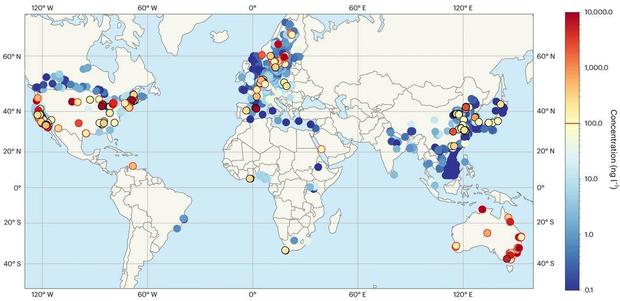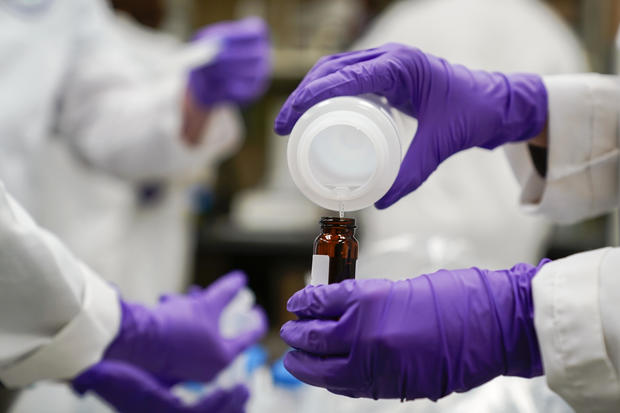Study maps "forever chemical" water contamination hotspots worldwide, including many in U.S.
Sydney —— Dangerous concentrations of long-lingering "forever chemicals" have been found in surface and groundwater worldwide, according to a study released Tuesday that showed Australia, the United States and Europe as hotspots.
A paper published in the journal Nature Geoscience analysed data from 45,000 water samples globally and found a "substantial fraction" had levels of PFAS — per- and polyfluoroalkyl substances — above recommended levels.
Found in everyday products such as non-stick frying pans, food packaging and waterproof clothing, the substances have been linked to serious health conditions including cancer and birth defects.
- FDA says food packaging containing PFAS no longer sold in U.S.
They have been found everywhere from turtle eggs to Antarctic snow, but the latest study showed they were prevalent in surface water and groundwater used by humans for drinking.
"Many of our source waters are above PFAS regulatory limits," said Denis O'Carroll, one of the study's authors and a professor at the University of New South Wales in Australia.

O'Carroll said it was already known that the thousands of types of forever chemicals were "pervasive in the environment" but he expressed shock at how much higher the sampled levels were versus compared with recommended levels; "We're talking above 5%, and it goes over 50% in some cases."
The research found that 69% of groundwater samples from around the world surpassed Canada's minimum standards and 6% of samples surpassed the EU's standard.
Australia, China, the United States and parts of Europe were shown to be global hotspots of high concentrations of PFAS.
A separate study published in the summer of 2023 found that almost half of the tap water flowing into U.S. homes was estimated to have one or more PFAS, of which there are more than 12,000.

The new study acknowledged, however, that the locations with the highest measured concentrations of PFAS were also areas with the highest levels of testing, and with more research, comparable results could be found across the globe.
PFAS is considered to be spread across the globe, but the extent of contamination on the earth's surface and in waterways and drinking supplies is not known.
Canada, the United States, the European Union and Australia have begun restricting the use of PFAS amid health and environmental concerns.
- In:
- Environmental Protection Agency
- Environment
- Microplastics
- Water Conservation
- PFAS
- Pollution
- Plastics
Disclaimer: The copyright of this article belongs to the original author. Reposting this article is solely for the purpose of information dissemination and does not constitute any investment advice. If there is any infringement, please contact us immediately. We will make corrections or deletions as necessary. Thank you.
Title:Study maps "forever chemical" water contamination hotspots worldwide, including many in U.S.
Url:https://www.investsfocus.com







